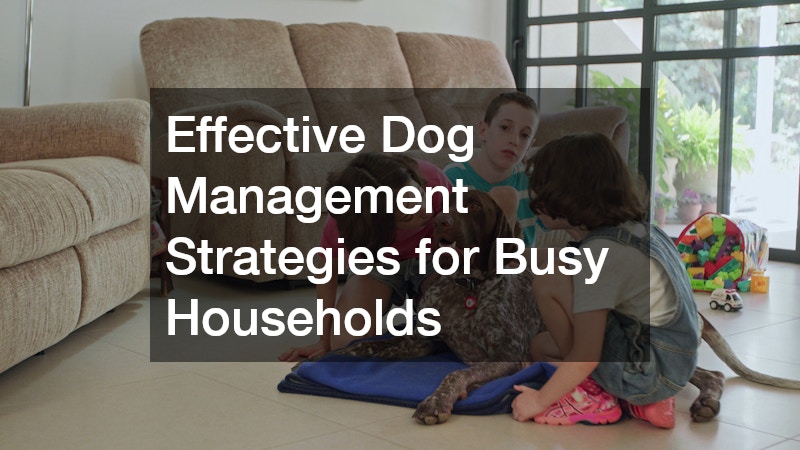
Welcoming a furry friend into your family can bring great joy, but it also comes with responsibilities. Proper dog management is crucial to ensure your pet’s well-being and happiness. In this comprehensive guide, we will discuss various aspects of caring for your dog’s needs, from training basics to creating a dog-friendly environment at home. By following these tips, you can establish a strong bond with your canine companion and provide them with a fulfilling life.
The Importance of Assessing Your Dog’s Needs
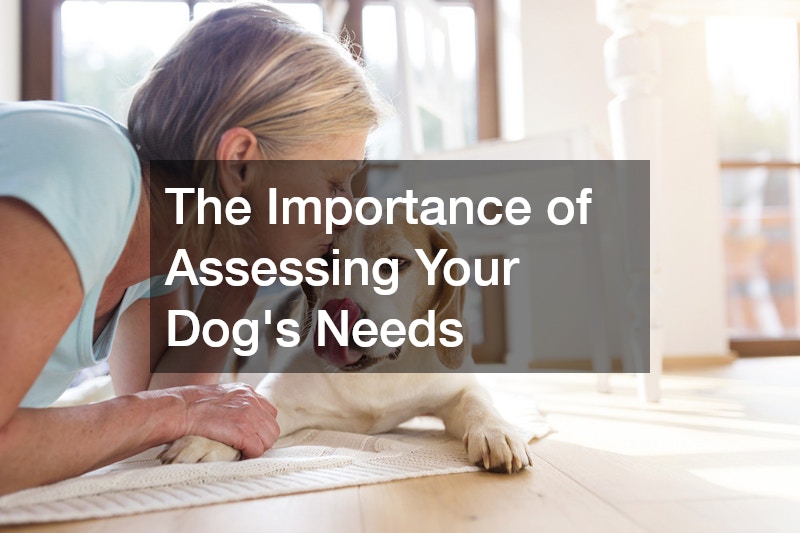
Before diving into dog management, it is essential to understand your pet’s specific requirements. Consulting with a local dog groomer can help you determine the grooming needs of your furry friend. Additionally, observing your dog’s behavior and energy levels will give you insights into their exercise needs and dietary requirements. By assessing these factors, you can tailor your care routine to meet your dog’s individual needs.
Proper dog management involves more than just providing food and shelter. It requires understanding and meeting your pet’s physical, mental, and emotional needs. Regular visits to a local veterinary service can ensure that your dog receives necessary vaccinations and preventive care. Moreover, seeking advice from a knowledgeable professional can help address any health concerns or behavioral issues that may arise.
Creating a bond with your dog based on trust and communication is key to successful dog management. Establishing clear rules and boundaries from the beginning can prevent confusion and promote positive behavior. Consistent training and reinforcement techniques, such as rewards and praise, can help shape your dog’s actions and strengthen your relationship.
Training Basics Every Busy Family Should Know
Amidst a bustling household, finding time for dog management can be challenging. However, incorporating basic training principles into your daily routine can make a significant difference. Visiting a flooring store to select the right flooring for your home can facilitate training sessions and create a safe environment for your dog. Consistency is key, so setting aside dedicated time for training each day can help reinforce desired behaviors.
Incorporating short training sessions throughout the day can be more effective than lengthy, infrequent sessions. By keeping training sessions brief and engaging, you can hold your dog’s attention and make learning fun. Utilizing positive reinforcement, such as treats or toys, can motivate your dog to follow commands and repeat desired behaviors. Remember to keep training sessions positive and rewarding for both you and your furry friend.
In addition to traditional obedience training, teaching your dog household manners is essential for harmonious living. Setting rules for behaviors like not jumping on furniture or waiting patiently at doorways can create a peaceful coexistence. Consistency in enforcing these rules and providing clear guidance will help your dog understand expectations and become a well-behaved member of the family.
Establishing a Consistent Daily Routine
A consistent daily routine is essential for effective dog management. Visiting a local veterinary service for regular check-ups and vaccinations is a crucial part of maintaining your dog’s health. Establishing daily rituals, such as feeding, walking, and playtime, can provide structure and predictability for your furry friend. Consistency in routine can reduce anxiety and create a sense of security for your dog.
Creating a structured daily schedule that includes ample time for exercise and mental stimulation is vital for your dog’s well-being. Engaging in activities that cater to your dog’s physical and mental needs can prevent boredom and behavioral issues. Incorporating interactive play sessions and puzzle toys can keep your dog entertained and provide mental enrichment.
Along with physical activities, mental stimulation is important for your dog’s overall happiness and fulfillment. Introducing new toys, puzzles, and training activities can challenge your dog’s mind and prevent boredom. Considering your dog’s breed and individual preferences can help you select activities that keep them engaged and mentally sharp.
Balancing Feeding Schedules with Family Life
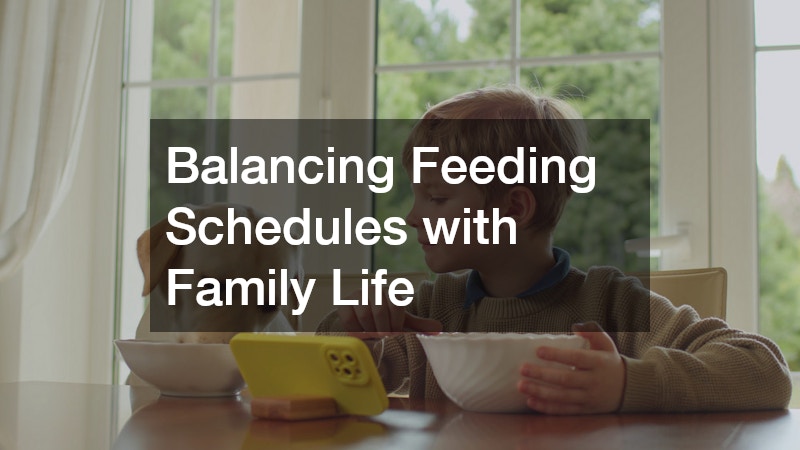
Finding the right balance between your family’s schedule and your dog’s feeding routine is crucial for proper dog management. Consulting with a local veterinary clinic can help you determine the appropriate feeding schedule and dietary requirements for your pet. It is essential to establish a consistent feeding routine to prevent digestive issues and maintain your dog’s overall health.
Incorporating mealtimes into your family’s daily schedule can promote bonding and create a sense of routine for your dog. Using feeding times as opportunities for training and reinforcement can enhance your dog’s obedience and strengthen your relationship. Monitoring your dog’s weight and body condition will help you adjust their feeding schedule and portion sizes accordingly.
Along with regular meals, providing healthy treats and snacks can be a great way to reward good behavior and reinforce training. Choosing nutritious treats that complement your dog’s diet can prevent overfeeding and maintain their optimal health. Remember to consider your dog’s individual preferences and dietary restrictions when selecting treats for training and enrichment.
Prioritizing Regular Exercise for Your Dog
Exercise is vital for your dog’s physical health and mental well-being. Visiting a local veterinarian can help you determine the appropriate exercise regimen based on your dog’s breed, age, and health condition. Regular physical activity can prevent obesity, improve cardiovascular health, and enhance your dog’s overall quality of life.
Incorporating daily walks, runs, or playtime sessions can keep your dog active and engaged. Providing opportunities for off-leash exercise in a safe, enclosed environment can allow your dog to explore and release pent-up energy. Monitoring your dog’s behavior during exercise can help you gauge their fitness level and adjust the intensity and duration of activities accordingly.
In addition to traditional outdoor activities, indoor exercise can be beneficial, especially during inclement weather. Setting up an indoor play area with toys, agility equipment, and interactive games can stimulate your dog mentally and physically. Creating a diverse range of activities for dog management can prevent boredom and satisfy your dog’s need for stimulation.
Incorporating Short Indoor Play Sessions
When limited by space or weather conditions, engaging your dog in short indoor play sessions can provide mental and physical stimulation. Visiting a laminate flooring store to select durable flooring options can create a safe and comfortable space for indoor play. Utilizing interactive toys, treat-dispensing puzzles, and hide-and-seek games can keep your dog entertained and mentally engaged.
Incorporating indoor play sessions into your daily routine can prevent boredom and promote healthy behavior. Designating a specific area for playtime can help your dog differentiate between play and rest. Rotating toys and activities regularly can maintain your dog’s interest and prevent them from becoming disinterested or destructive.
Keeping indoor play sessions short and engaging can prevent overstimulation and exhaustion. Allowing your dog to take breaks and providing opportunities for rest during playtime can help regulate their energy levels. Monitoring your dog’s behavior and body language can help you gauge their enjoyment and adjust the intensity and duration of play sessions accordingly.
Using Positive Reinforcement Effectively
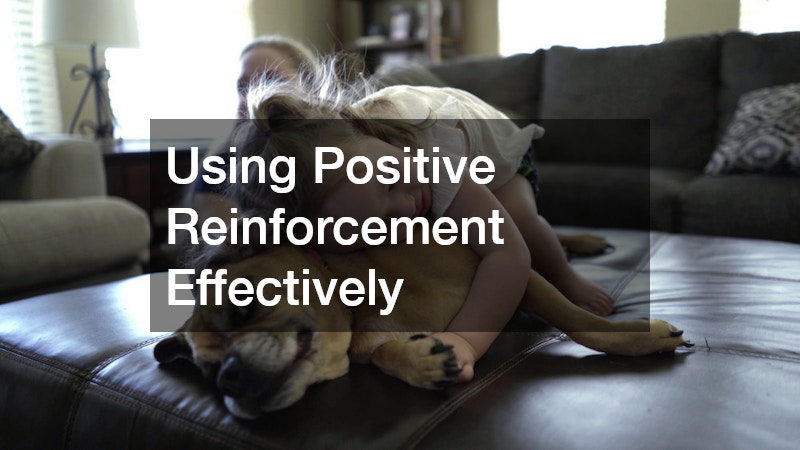
Positive reinforcement is a powerful tool for shaping your dog’s behavior and fostering a strong bond. Enrolling in a dog training company can provide you with guidance on effective training techniques and reinforcement strategies. Using rewards, such as treats, praise, or toys, can motivate your dog to repeat desired behaviors and learn new commands.
Consistency is key when using positive reinforcement to train your dog. Rewarding good behavior immediately and consistently can help your dog associate the behavior with a positive outcome. Avoid using punishment or negative reinforcement, as it can create fear and confusion in your dog. Remember to be patient and understanding during the training process.
Incorporating positive reinforcement into your daily interactions with your dog can strengthen your bond and build trust. Celebrating small victories and progress can boost your dog’s confidence and encourage continued learning. By focusing on positive experiences and emphasizing rewards, you can create a positive training environment that promotes cooperation and mutual respect.
Creating a Dog-Friendly Environment at Home
Designing a dog-friendly environment at home is essential for your pet’s well-being and comfort. Consulting with a dog trainer near me can help you create a living space that accommodates your dog’s needs and behaviors. Providing a designated rest area, play zone, and feeding station can establish clear boundaries and promote a sense of security for your furry friend.
Incorporating dog-safe elements and materials into your home decor can prevent accidents and injuries. Visiting dog-friendly flooring stores to choose durable and easy-to-clean flooring options can enhance your dog’s safety and comfort. Securing hazardous items, electrical cords, and toxic plants can protect your dog from potential harm and ensure their well-being.
Creating a dog-friendly environment also involves establishing a routine for grooming, exercise, and play. Designating specific areas for grooming sessions, storing toys, and engaging in playtime can promote organization and consistency. Including your dog in family activities and providing opportunities for socialization can strengthen your bond and create a harmonious living environment.
Monitoring Health and Preventive Care
Regular monitoring of your dog’s health and well-being is essential for effective dog management. Partnering with dog training businesses can provide you with valuable resources and information on preventive care measures. Keeping track of your dog’s vaccination schedule, parasite control, and dental hygiene can prevent health issues and ensure their longevity.
Regular veterinary check-ups and wellness exams can help detect potential health concerns early and address them promptly. Visiting a local veterinary clinic for routine screenings, blood tests, and examinations can provide insights into your dog’s overall health status. Following your veterinarian’s recommendations for preventive care can safeguard your dog’s health and well-being.
Maintaining a detailed health record and tracking changes in your dog’s behavior or physical condition can aid in early disease detection. Monitoring your dog’s appetite, water intake, energy levels, and bathroom habits can signal underlying health issues. Seeking professional guidance and scheduling regular check-ups can help you stay proactive in managing your dog’s health.
Designing Safe Outdoor Spaces Around Trees
Creating a safe outdoor environment for your dog to explore and play is essential for their physical and mental well-being. Collaborating with local tree companies can help you design a dog-friendly outdoor space that integrates natural elements like trees and plants. Ensuring that your outdoor area is free of toxic plants, sharp objects, and hazards can prevent injuries and accidents.
Providing adequate shade, water, and shelter in your outdoor space can protect your dog from extreme weather conditions and promote their comfort. Designating play areas, walking paths, and resting spots can encourage your dog to engage in diverse activities and explore their surroundings. Monitoring your dog’s behavior and interactions with outdoor elements can help you identify potential risks and make necessary adjustments.
Creating a designated potty area and waste disposal system can promote cleanliness and hygiene in your outdoor space. Regularly cleaning up waste, maintaining a secure fence, and inspecting outdoor surfaces for safety can enhance your dog’s outdoor experience. Incorporating outdoor toys, agility equipment, and interactive games can keep your dog entertained and physically active.
Keeping Dogs Engaged with Toys and Enrichment
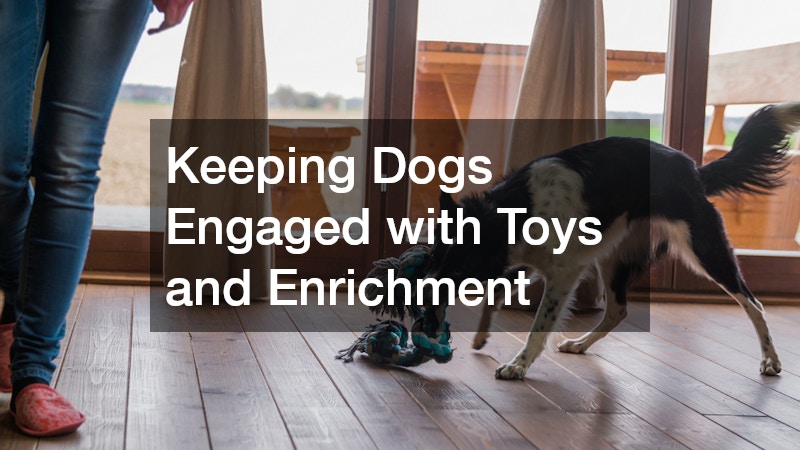
Toys and enrichment activities play a crucial role in keeping your dog mentally stimulated and physically active. Incorporating a variety of toys, puzzles, and interactive games into your dog’s routine can prevent boredom and destructive behavior. Sourcing engaging toys from reputable dog management stores can provide your furry friend with hours of entertainment and learning opportunities.
Rotating your dog’s toys regularly can maintain their interest and prevent toy fatigue. Introducing new toys, puzzle feeders, and interactive playthings can challenge your dog’s cognitive skills and promote problem-solving abilities. Observing your dog’s preferences and play style can help you select toys that cater to their individual needs and keep them engaged.
In addition to toys, incorporating enrichment activities like scent games, hide-and-seek, and agility courses can provide mental stimulation and excitement for your dog. Creating an enriching environment that caters to your dog’s natural instincts and behaviors can prevent boredom and promote a happy, healthy lifestyle. Remember to supervise your dog during playtime and rotate activities to keep them mentally engaged and physically active.
Effective dog management is essential for providing your furry friend with a happy and healthy life. By assessing your dog’s individual needs, establishing a consistent routine, and incorporating positive reinforcement techniques, you can build a strong bond and ensure their well-being. Creating a dog-friendly environment at home, monitoring their health, and designing safe outdoor spaces can further enhance their quality of life. Remember to prioritize regular exercise, mental stimulation, and enrichment activities to keep your dog engaged and fulfilled. With proper care and attention, you can create a harmonious relationship with your canine companion that lasts a lifetime.
